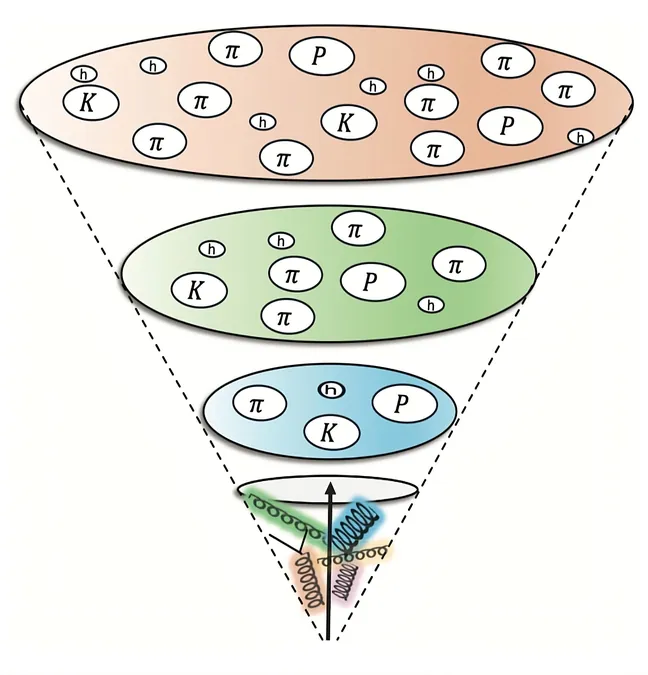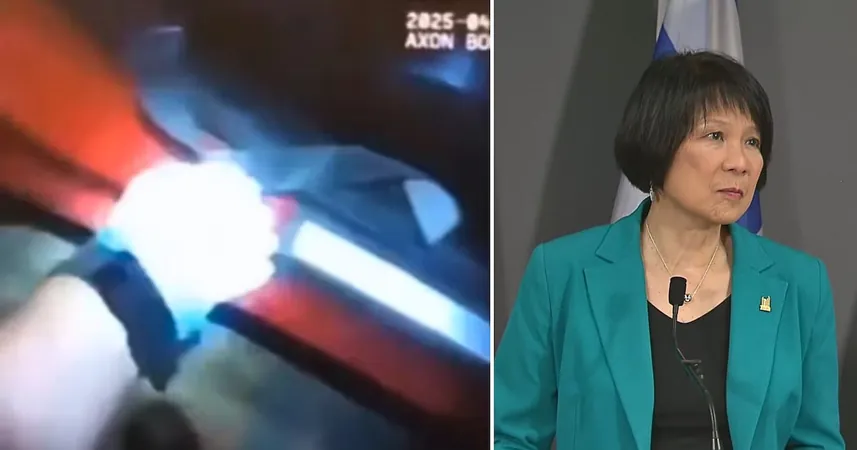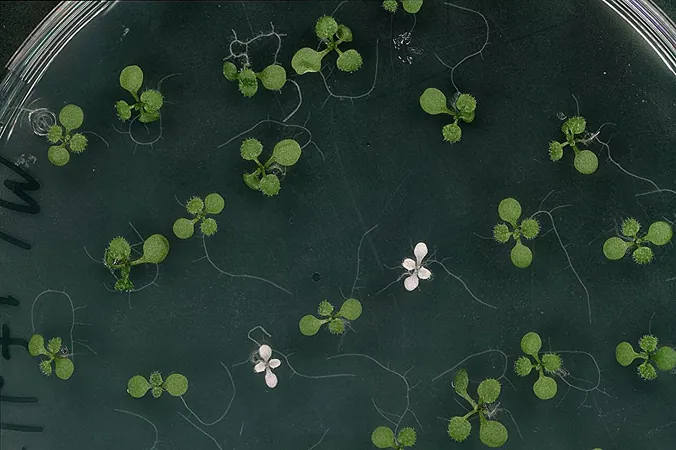
Revolutionary Discoveries in Particle Physics: Maximal Entanglement Unlocks Secrets of Jets
2025-04-13
Author: Jacques
Physicists Illuminate Particle Origins with Groundbreaking Research
In a stunning breakthrough, scientists from the U.S. Department of Energy's Brookhaven National Laboratory and Stony Brook University have unveiled compelling evidence that the particles generated in high-energy jets maintain a link to their subatomic origins. This eye-opening research, recently highlighted as an Editor's Suggestion in the esteemed journal Physical Review Letters, could reshape our understanding of particle interactions.
Connecting the Dots: Entanglement and Particle Formation
Despite years of investigation, the relationship between the initial conditions of a jet and the distribution of the particles it produces has remained largely mysterious. Charles Joseph Naim, a research associate at SBU's Center for Frontiers in Nuclear Science, stated, "For the first time, we establish a clear connection between 'entanglement entropy' at the jet's formation stage and the resulting particles as the jet progresses. This is a pivotal discovery in jet physics!"
Peering into the Heart of Proton Collisions
The team's findings are grounded in a detailed analysis of jet particles generated by proton-proton collisions, utilizing data from the ATLAS experiment at the Large Hadron Collider (LHC) at CERN. During these explosive collisions, quarks and gluons—the fundamental building blocks of protons—are hurled apart with staggering energy. However, they don't remain solo for long, immediately engaging in a complex reorganization process called fragmentation, resulting in a spray of new particles, known as hadrons.
Maximal Entanglement: A Game-Changer in Particle Physics
Leading the investigation, Abhay Deshpande, a distinguished professor at SBU and director of science for the upcoming Electron-Ion Collider project, declared, "We sought to determine if the hadron distribution within jets was impacted by the entanglement levels among quarks and gluons during the jet's inception." The study builds on previous research by co-authors Zhoudunming Tu and Dmitri Kharzeev, which established a correlation between entangled quarks in protons and the resultant particle distribution patterns.
Unraveling the Mystery: Entropy and Disorder in Particle Formation
Their research indicated that higher entanglement correlates with increased disorder in the particles produced. Tu remarked, "Our previous findings revealed maximal entanglement within high-energy protons. This study extends that to jets—affirming whether such maximal entanglement also occurs among the quark and gluon fragments as they form new particles."
A New Era in Quantum Physics?
By analyzing LHC data, the researchers observed that the distribution of jet hadrons aligned perfectly with predictions rooted in maximal entanglement. Kharzeev remarked, "This research provides a fresh quantum-level insight into the fragmentation process, unlocking new avenues for exploration in particle physics."
Looking Ahead: The Future of Hadron Research
Jaydeep Datta, research scientist at SBU, affirmed, "This study sets the stage for further investigations into the influence of quantum entanglement on hadron formation, particularly with the upcoming Electron-Ion Collider set to provide even finer insights. Exciting times are ahead in the world of particle physics!"









 Brasil (PT)
Brasil (PT)
 Canada (EN)
Canada (EN)
 Chile (ES)
Chile (ES)
 Česko (CS)
Česko (CS)
 대한민국 (KO)
대한민국 (KO)
 España (ES)
España (ES)
 France (FR)
France (FR)
 Hong Kong (EN)
Hong Kong (EN)
 Italia (IT)
Italia (IT)
 日本 (JA)
日本 (JA)
 Magyarország (HU)
Magyarország (HU)
 Norge (NO)
Norge (NO)
 Polska (PL)
Polska (PL)
 Schweiz (DE)
Schweiz (DE)
 Singapore (EN)
Singapore (EN)
 Sverige (SV)
Sverige (SV)
 Suomi (FI)
Suomi (FI)
 Türkiye (TR)
Türkiye (TR)
 الإمارات العربية المتحدة (AR)
الإمارات العربية المتحدة (AR)